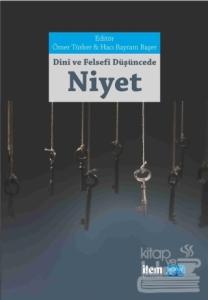
The primary objective of the text is to help students in Mechanical Engineering curricula develop an orderly approach in understanding the obscure concepts such as the energy and the exergy of a system. In doing so, a total of two hundred illustrative solved problems are provided, and five hundred and fifty unsolved problems with engineering emphasis are contained in the text. In addition, each chapter contains True-False and a Multiple Choice Test sections. Both of these tests are aimed for self-check of student's weakness or strength on the highlights of the related chapter. The material has been selected carefully to include a broad range of topics suitable for two-semester engineering thermodynamics course at the junior level, and has been organized around such a way that the conservation of mass, energy, and the non-conservation of exergy are covered in sequence in Chapters 3, 4, and 5. Especially in Chapters 6, 7, 8, and 9 open-ended type design problems are included. Students could be assigned to work in teams to solve these problems. Design problems encourage the students to spend more time exploring applications of thermodynamic principles to devices and flow systems. Special care has been given to illustrations of both the main text and of the problem section, and if necessary, figures in color are used for making the subject more understandable. Further facilitate comprehension of the subject, especially for students taking an elementary thermodynamics course in engineering curricula for the first time, systems like flow machines or heat exchangers have been illustrated with their essential components without going into unnecessary complexity.
The primary objective of the text is to help students in Mechanical Engineering curricula develop an orderly approach in understanding the obscure concepts such as the energy and the exergy of a system. In doing so, a total of two hundred illustrative solved problems are provided, and five hundred and fifty unsolved problems with engineering emphasis are contained in the text. In addition, each chapter contains True-False and a Multiple Choice Test sections. Both of these tests are aimed for self-check of student's weakness or strength on the highlights of the related chapter. The material has been selected carefully to include a broad range of topics suitable for two-semester engineering thermodynamics course at the junior level, and has been organized around such a way that the conservation of mass, energy, and the non-conservation of exergy are covered in sequence in Chapters 3, 4, and 5. Especially in Chapters 6, 7, 8, and 9 open-ended type design problems are included. Students could be assigned to work in teams to solve these problems. Design problems encourage the students to spend more time exploring applications of thermodynamic principles to devices and flow systems. Special care has been given to illustrations of both the main text and of the problem section, and if necessary, figures in color are used for making the subject more understandable. Further facilitate comprehension of the subject, especially for students taking an elementary thermodynamics course in engineering curricula for the first time, systems like flow machines or heat exchangers have been illustrated with their essential components without going into unnecessary complexity.










